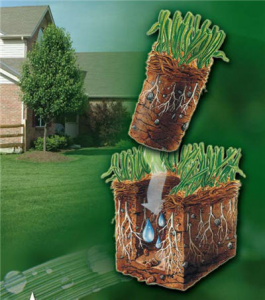 Aeration is one of the more important services for the overall health of your lawn, and imperative for a successful Pesticide-Free package.
Aeration is one of the more important services for the overall health of your lawn, and imperative for a successful Pesticide-Free package.
How Does Aeration Help Your Lawn?
- Reduces soil compaction
- Increases uptake of water into the soil
- Makes watering and irrigation systems more efficient
- Improves fertilizer uptake and usage
- Creates stronger and more self-sufficient root system
- Reduces water runoff and puddling
- Enhances thatch breakdown
- Enhances heat and drought stress tolerance
Lawn aeration improves air, water, and nutrient movement in the soil thereby increasing microbial activity, which breaks down thatch.
It also alleviates hard packed soils, especially high-activity clay soils.
If you lawn is not aerated, a thinning of the grass may occur, which allows weeds and disease to take over.
Lawn Aeration, Overseeding and Soil Amendment
Broadcast over seeding is frequently recommended in conjunction with aeration. It’s also a good time for soil amendment, too.
Aeration, like seeding, is an important part of an Integrated Pest Management (IPM) plan, and imperative for a successful pesticide and herbicide-free fertilizer package.
 How Often Should Lawn Aeration Be Done?
How Often Should Lawn Aeration Be Done?
- NTT offers both a single pass or double pass for lawn aeration. A double pass is more beneficial.
- We recommend doing aerations when the weather is cooler; spring or fall, and on a yearly basis.
- A licensed technician from NTT can advise you on what would be recommended specifically for your lawn.
Take the first step to a healthy lawn with aeration – download our aeration information flyer.
